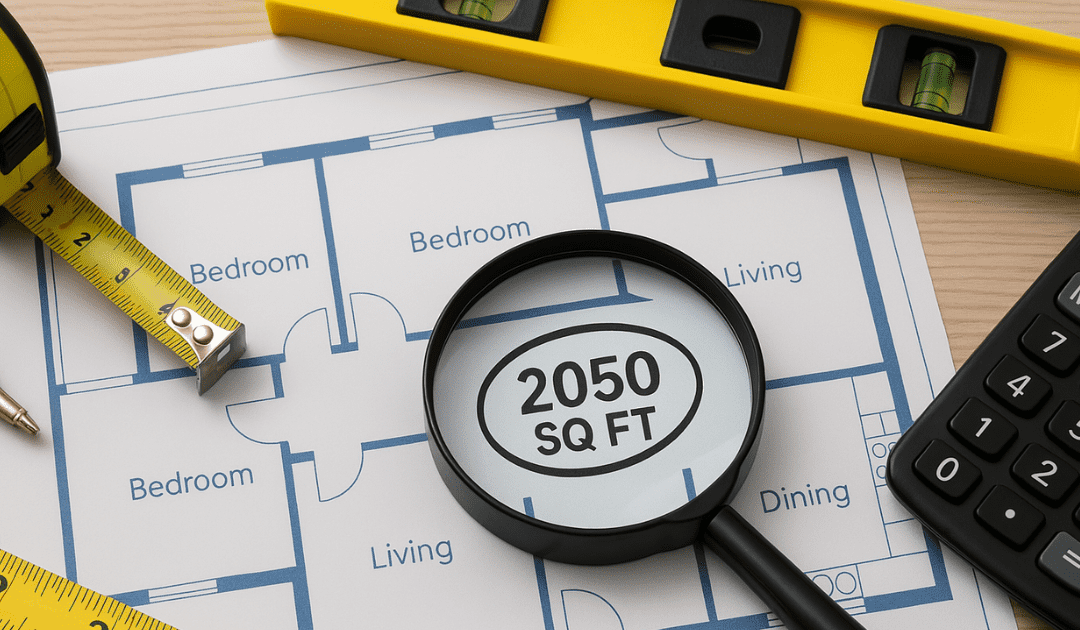Mistakes happen in any profession. Honest, minor mistakes are typically forgiven, and the parties move on. However, in real estate transactions, mistakes can end up costing either the buyer or seller significantly. And if the mistake results from a Realtor not having the accurate square footage in a listing, it can have long-lasting, damaging legal consequences.
The worst instances make it into the news and Real Estate Magazine, as was the case in Stouffville, Ont., in 2020 when a first-time homebuyer was informed by a real estate agent that a property was approximately 2,100 square feet, but an appraisal later revealed it was only 1,450 square feet. The buyer sought and won rescission of the purchase agreement.
While this is an extreme case, even smaller discrepancies in square footage matter because buyers and sellers make decisions based on price per square foot. And while you won’t read about most discrepancies, they suggest a lack of professionalism and accuracy in listings, which harms the entire real estate sector.
Why inaccurate records get perpetuated
There are several reasons why real estate listings may include inaccurate square footage. One of the most common is reliance on information pulled from tax records, which may no longer be accurate, up-to-date sources.
Inaccuracies occur when there are outdated records, changes in plans, additions without proper permits, incorrect space classifications, incorrect information provided to a municipality when the house was built, or limited access to the property. In this way, wrong information gets passed along and perpetuated.
Concerns about the widespread use of square footage from tax records in real estate listings led the province of Ontario’s Municipal Property Assessment Corporation (MPAC) in 2019 to prohibit its public records/assessments of square footage from being shared through an MLS and public property marketing.
MPAC’s assessment of square footage is not always done from the inside of a house. Instead, it may result from exterior measurements of the ground floor in which case spaces that are open to below or the footprint of higher floors differing from those on the ground floor are not properly accounted for. This is often the case with modern house layouts.
Inaccurate measurements are a financial and reputation risk
Inaccurate measurements for real estate listings have negative consequences, regardless of the property size, but in large luxury listings, the negative impact is amplified. For a home with an average square foot price of $350, the difference between 3,000 square feet versus 3,400 square feet is a price differential of $140,000.
Significant price differentials like that can lead to expensive lawsuits or professional complaints and fines. Even if an agent avoids these immediate financial consequences, professional reputation is the issue.
Inaccurate measurements could suggest a lack of professionalism, undermining a client’s trust and leading to a decision to end the relationship. At the very least, it will halt an agent’s best source of leads: referrals.
Professionals provide accurate measurements
Real estate agents interested in delivering the most accurate real estate listings should not trust square footage included in public records. The best course is to measure a listing every time, no matter what.
A smart first step for real estate agents is proactively understanding what should be included in square footage based on accepted local best practices. Canada currently lacks a nationwide measurement standard, though some provinces, like Alberta, follow specific guidelines such as the Residential Measurement Standard (RMS). While regulations may vary, real estate agents and brokerages can invest in training to ensure accurate and consistent measurements, helping clients make informed decisions.
For accurate listings, agents can hire a qualified measurement professional or use automated square footage technology to protect themselves and their clients.
Peace of mind and a stronger real estate sector
Choosing not to rely on public records and providing accurate measurements of a property listing does more than establish peace of mind for an agent. Ensuring that homes are accurately priced, and purchase decisions are fully transparent based on the home’s true size elevates the professionalism and success of the entire real estate industry.

Alexander Likholyot is the CEO and co-founder of Planitar, the company behind iGUIDE, a leading prop-tech firm. Before co-founding Planitar in 2013, he spent over a decade as a Research Scientist at Northern Digital Inc. (NDI). With a strong background in technology and leadership, he has driven Planitar’s growth, first as CTO and now as CEO since 2019.
















Hello Alexander ….. can you pls provide the details of the case please so we can read more details if this very interesting case. Thank Yoh
With no standard method of measuring square footage of a residential property, there will always be an opportunity for a disgruntled buyer to sue someone. The argument of building costs per square foot and comparing that to the resale market, in my own opinion, is not an accurate assessment. If a house reflected less square footage when sold, that would indicate a Seller would be entitled to a further sum of money from the Buyer to make up for the extra square feet not reported in the listing copy. The article does not state if there was another third party that had measured the property, just the appraiser. Where did he get the figures from? None the less a sales rep should measure every property stating how the measurements were taken and be prepared to defend that in court. But on another note, if a Buyer physically inspects the product and knows exactly what they are purchasing they should not be able to turn around and sue someone after the fact.
Buy a damn tape measure and use it, each AND every time. It’s not that complicated.
Is this not taught in the RE licensing courses anymore?
Assessment vs third party measurer vs Drafting professional vs Builder plans vs inside or
Outside wall measure vs finished or unfinished and what counts in each and what constitutes as finished. Does a closet square footage count? Hallway? Under the stairs if finished? Decks? Patios if heavily landscaped? Fully finished garage with trim, paint, windows, doors, heat and epoxy floors? Hmmmmmm……
Lots to consider. Hire a professional. And disclose how you reached the numbers. And buyers agents – Do
Your homework and have the conversations with your clients. Metrics/Statistics can be skewed.
SF should be declared at the very initial by the Builder/s and filed into the Mpac /geo warehouse and such record keeping organizations
That would be great for units that never change in size. But houses are often expanded and renovated. Bottom line, you can’t rely on what’s in MPAC or Geo.